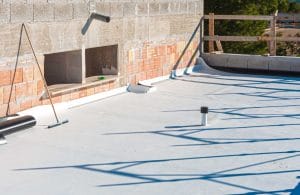“Snow and ice dams can be harmful to your home roof. So, even if you are able to prevent an ice dam, it is likely you would face roof leakage. It can damage the inside of your home. There are a plethora of reasons behind why roof snow removal is essential. For a starter, it keeps all excess weight off and will protect inside of your home form facing any structure damage. Make sure to apply the rule of thumb, for one square-foot of snow that’s one-inch in-depth it will weigh about a pound. In other words, if your roof has 12 inches of snow on top of it, then it could easily put thousands of pounds of stress on your roof. Minimize your stress and keep your roof safe from leakage.” – Roof Solar, Roofing expert.
Alternative To Roof Snow Removal

One of most commonly followed alternative methods to remove snow from roofs uses a heat cable. You can install these cables on top of your roof and prevent snow from piling up. Since there is not much you can do to prevent snow from getting collected on the roof, this method reduces the effects and therefore there is no leakage or any structural damage. Moreover, they are affordable. Make sure to take assistance from the Best Roofing Services Near Me for proper installation or roof repair.
Snow Removal Is Necessary
It is highly recommended to get your roof cleared every time after your roof faces more than six inches of snowfall. It will make sure that there is no structural damage and snow is piling up, in areas where snowfall happens often – you can get roof clear for some more times. Generally, roofs are different from one another and depending on location you can face regular problems with ice dams.
Otherwise, in case it is your first time and your only concern is to avoid roof collapse, then perhaps it is time to get professionals. It is highly recommended not to DIY removal of snow from the roof. However, if snow is less than 6-inch then you go for DIY methods.
Shovel or Rake
It is possible that your roof snow needs to be shoveled one time and raking on next. Largely, it will depend on how big your roof and height of your building. Additionally, it will depend on snow your roof can actually take and type of snow.
Roof-Raking: It is generally the most common and adapted method. It is easy to perform and will help you to keep snow off your roof. So, in case you stay in a small one-story home then take the roof-rake option. On the other hand, if you live in taller buildings then this option is good. But, roof-raking has its own limitations. It can be difficult to use roof-raking methods to clear snow from roof valleys.
Another method or technique is named as shovelling. Perhaps your roof can use some shovelling after a storm drops too much snow. Sometimes, roof-rake method fails when snow is too heavy or roof is too large. Shovelling is perhaps a better option when there is heavy snow.
Roof-Ranking Technique
First things first, remember roof-raking is best of wintertime. It is an excellent habit to occasionally hire the best residential roofing Company Jacksonville Fl for roof repair after snowfall. You can also go for service that includes snow removal. If you are doing DIY then make sure to buy a rake with a slight curve in the handle. It is also a good idea to buy an extra extension pole if your roof is at height. Take extreme precautions and be careful while removing snow.
Shovelling The Roof
During times of snow, it is common that your roof will be slippery, you can easily injure yourself. That is why it is encouraged to take assistance. You can use a shovel with a plastic edge and not metal one. Since plastic is less like to cause any damage to your shingles. It is highly suggested to not to dump snow onto your gas meter.
Wrapping Up
Lastly, make sure to remove snow using either shovel or a rake. Minimize risk of getting injured by taking expert assistance. Make sure to not to put salt on your roof – it can discolour your shingles. Use the rule of thumb and clear your roof after every six inches of snow.




